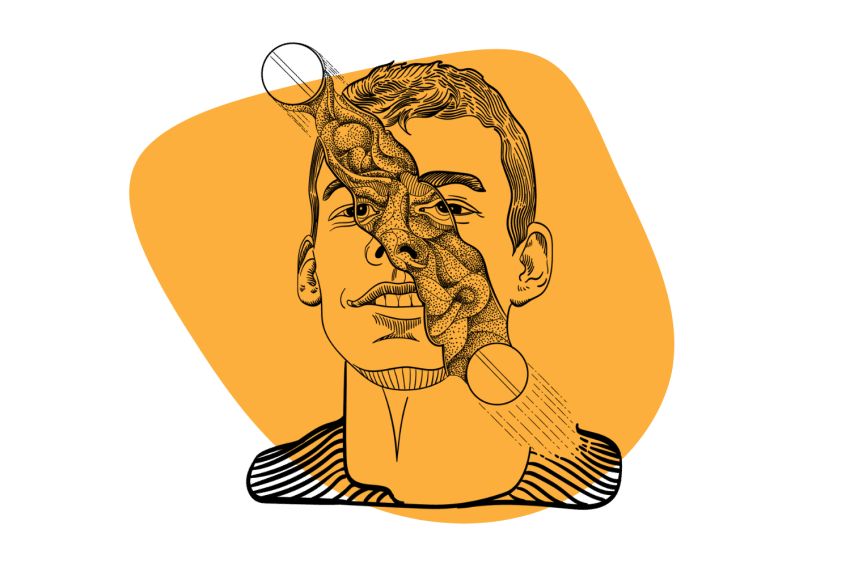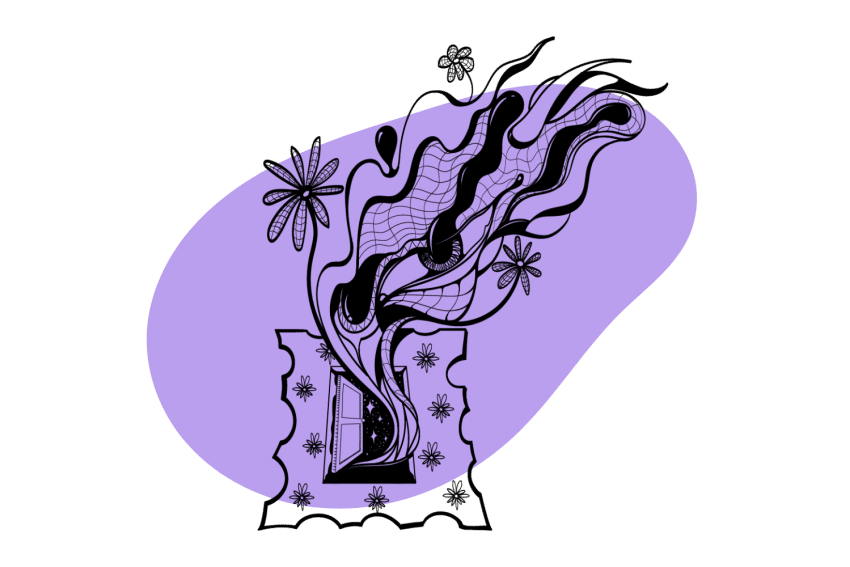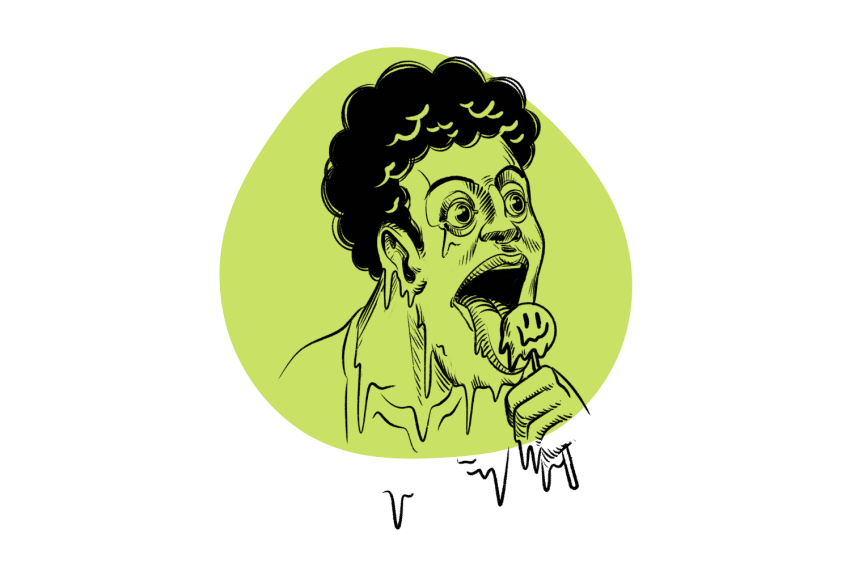NASA Gave Dolphins LSD: Here’s What Happened
Giving dolphins LSD comes up as one of the wackiest events in psychedelic research history. Not only was it a flopping failure for researchers — it also raised numerous ethical, moral, and spiritual concerns in the process.
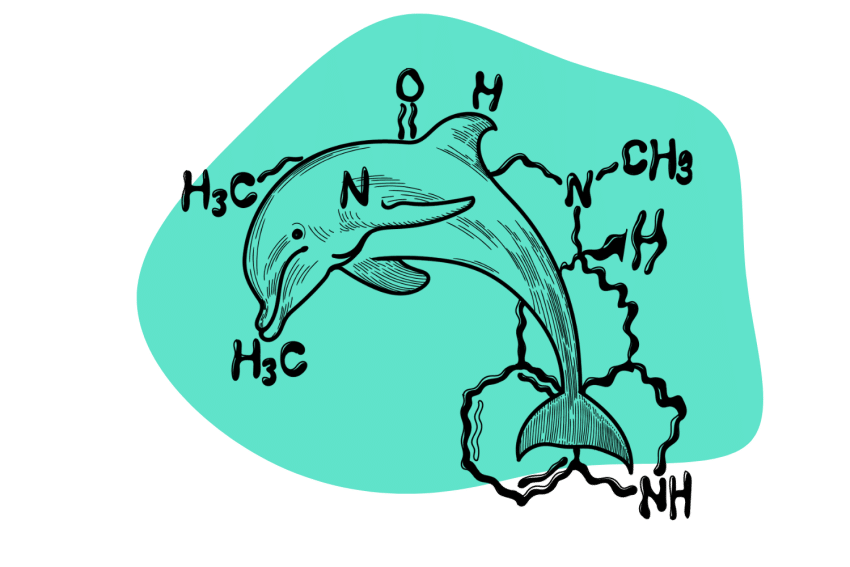
In the mid-1960s, Margaret Howe (now Howe Lovatt) suggested a radical concept: she would live full-time with a dolphin for eight weeks in isolation. The hope was the same as it had been for the months of work before this — establishing communication between our species and theirs.
Though it began in earnest, it quickly spun into dark territory, likely setting back the study of dolphins, animal communication, and language by several years. Dr. John C. Lilly (who ran the research lab) found the concept thrilling and jumped on it despite Lovatt having no scientific background or research experience.
After only succeeding in training dolphins to make “humanoid” sounds, Lilly sought to utilize a tool he was already very familiar with, lysergic acid diethylamide (LSD). He hoped the psychedelic experience could help dolphins understand how humans communicate and use our language to talk back.
Here’s what unfolded and how the results continue to leave ripples in the field of psychedelic research to this day.
What Happened? Why A NASA-Funded Study Gave LSD to Dolphins
In the 1960s, the National Aeronautics and Space Administration (NASA) partially funded research into the effects of LSD on dolphins. Their goal was to establish language between our two species as practice for contact with extraterrestrial life.
The faces behind this study provide even more character than the research itself. Dr. Lilly became famous after he invented the isolation tank, which he believed could achieve “the deepest sleep that I have ever had,” along with other effects. Namely, “to experiment with… states of being [and] states of consciousness [1].”
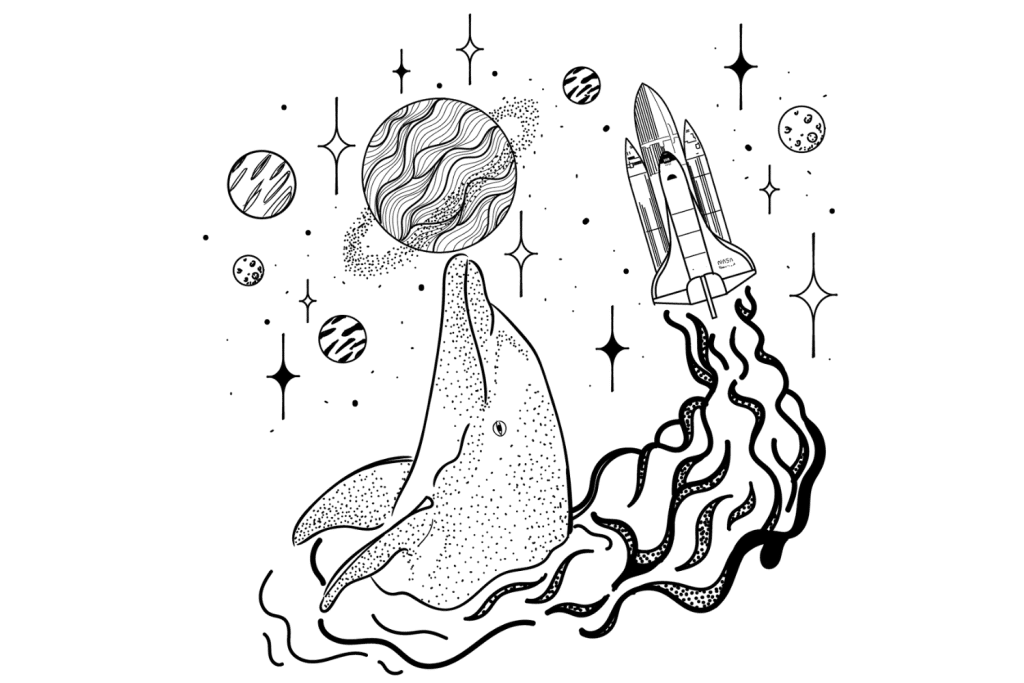
He also believed deeply in the impending contact with extraterrestrials and believed dolphins may hold the key to learning a language from another species. In an op-ed for the American Journal of Psychiatry, Lilly stated this belief clearly:
I cannot convey to you all of the evidence for my feeling that if we are to ever communicate with a non-human species of this planet, the dolphin is probably our best present gamble [2].
Pertinent to the sinister turn the research would later take, Lilly also noted:
In a sense, it is a joke when I fantasy that it may be best to hurry and finish our work on their brains before one of them learns to speak our language — else he will demand equal rights with men and their brains and lives under our ethical and legal codes!
Indeed, if dolphins could, they would likely have demanded better treatment from Dr. Lilly. If anything, it’s a testament to their inability to learn our language that they didn’t speak up sooner.
His eccentric beliefs in extraterrestrial life — he also wrote a book on how you can access the universe in a similar way to a computer [3] — likely led him to believe a larger force sent Howe.
Dr. Lilly Hires Margaret Howe Lovatt
Margaret Howe was not a researcher, nor was she interested in psychedelics. Her one desire was to get closer to dolphins, and she saw an opportunity when her brother informed her of a secret lab working with them on the island. She’d later tell The Guardian she got through the doors by simply stating, “Well, I heard you had dolphins and I thought I’d come and see if there was anything I can do to help.”
To the psychonautic explorer running the experiment, this likely constituted contact with a more intelligent being. Lilly wrote extensively about “long-term coincidences” like this and the super-intelligent beings responsible for them [4].
For years, Lovatt would take every opportunity to go to the facility. Eventually, researchers got the impression she was nurturing and intuitive enough to make the job work, despite her lack of experience.
One day, after getting in her car and leaving the lab with everyone else, Lovatt came up with the idea to move in with Peter and begin an intensive session of isolation. “So I said to John Lilly: ‘I want to plaster everything and fill this place with water. I want to live here.”
This radical concept was appealing to Lilly, who immediately set out to create a 2-month-long cohabitation experiment between the two of them. Trial runs revealed several problems, but Lovatt and Lilly were certain it was possible.
Why Give Dolphins LSD?
Lilly had a longstanding fascination with dolphins and posited that their brains would make them the ideal candidate for crossing the boundary into communication with another species. Dolphins are already incredibly communicative with each other and, according to Lilly, were even more so after dosing them with LSD.
Another element Lilly pointed to for proof of concept was the complexity of the dolphin brain and its immense brain-to-body ratio.
While we now understand this is not necessarily an indication of intelligence among non-human primates [5], Lilly and NASA believed this to be encouraging. Furthermore, we needed the experience to learn how to speak to non-humans before alien contact.
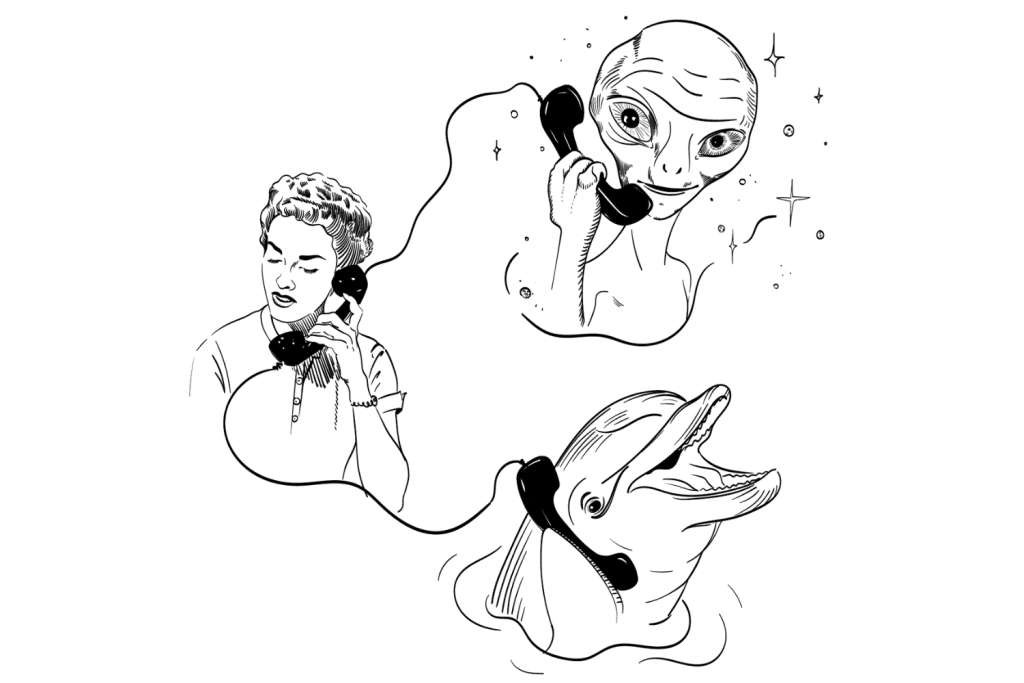
Lilly flooded the habitat and brought in an assistant to conduct a full-time live-in experience with one of the dolphins, Peter. Meanwhile, the two remaining dolphins downstairs were regularly dosed with LSD for observation.
At conferences, Lilly would astound some of the top thinkers of the time with recordings of his dolphins seemingly saying words in English.
In a major meeting of scientists at the Green Bank Observatory to discuss the search for extraterrestrial life, Lilly’s work overshadowed a major astronomical advancement. Despite working together to come up with the Drake equation — a mathematical formula to estimate the potential for life in the universe — the crew left with the nickname “The Order of the Dolphin.”
Drake was fascinated by slowed-down tapes of dolphins speaking. Later, he would say, “I now think that Lilly’s work was poor science. He had probably distilled endless hours of recordings to select those little bits that sounded humanlike.”
Lovatt maintains she fought to keep Lilly from dosing Peter, but after the experiment struggled to move forward without it, he did so anyway. Despite Lilly’s claims of efficacy, the recordings of Peter on LSD have little-to-no vocalization in them.
Lovatt’s Sexual Relationship With a Dolphin
A major turning point for the experiment came around the second week for the full-time dolphin roommate, Margaret Howe Lovatt. Lovatt was living alone with Peter and encountered some distractions from their living situation — Peter’s incessant sexual need was one of them.
She first tried taking him downstairs to be around the other dolphins, but Lovatt would ultimately “manually” take care of Peter’s urges herself. Later in life, she would describe this to the Guardian as “like an itch — just get rid of it, scratch, and move on … It wasn’t sexual on my part. Sensuous perhaps. It seemed to me that it made the bond closer.”
Though she downplayed the encounters later in life, her tone within her actual journal entries seemed more romantic:
At this point it occurs to me what has been going on. Peter is courting me…or something very similar! I began to take an active part in the play … and would compliment him vocally, soothingly, and rub him as he turns … One [thing that stood out to me] is the over-all way Peter was able to woo me, to teach me that I could play this game.

Of course, Peter was not attempting to “woo” Lovatt. In trying to see Peter as a human instead of a dolphin, Lovatt gave meaning to the movements she would typically attribute to a human.
As the New York Times put it, “Common bottlenose dolphins have sex frequently — very likely multiple times in a day.” Peter was simply being a dolphin in the throws of adolescence and found a willing participant.
Tragic Outcomes of the Dolphin LSD Experiment
After the study concluded, the research facility lost funding and began shutting down. Howe’s duties shifted toward helping ship out the dolphins and lab equipment, Peter included.
After Lilly decided to inject 200 μg of LSD into Peter, who was largely non-responsive, people began getting upset.
Several team members left in protest of the experimentation, which they didn’t feel showed as much promise as Lilly kept insisting on. Lilly had largely backed the experiment himself, but when other investors (like NASA) pulled out, he had to shut down.
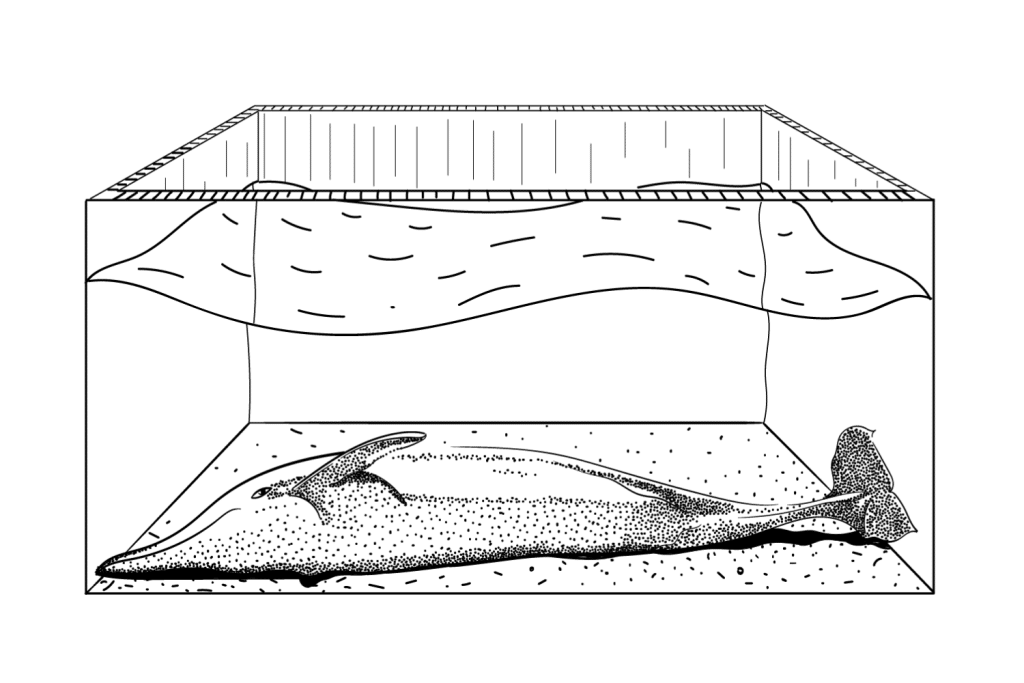
After the experiment, Peter was in a poorly-lit tank with very little — maybe no — sunlight. Unlike humans, dolphins don’t breathe automatically, and one day, Peter decided not to take his next breath, sinking to the bottom of the tank and dying.
Ironically, Lilly played a prominent role in discovering this fact about dolphins after multiple deaths after the administration of anesthesia. He noticed they’d die shortly after from lack of oxygen and would later discover new ways to observe the brain of a living dolphin without the tool.
Since we never established communication, we can never know what made Peter decide to take his own life. He may have been upset about losing Lovatt, his terrible new living conditions, the experimentation on him, or all of these at once.
What Did We Learn From Giving Dolphins LSD?
Lilly’s experiment failed to establish communication between species, but plenty remains to learn from it. Within the story of John Lilly and Margaret Howe Lovatt are broad implications for the study of dolphins, communication — and broader implications for research in general.
1. Lessons from Studying Dolphins on LSD
Though Lilly was wrong about being able to speak with dolphins, he was correct about their intelligence. His research into them and championing their species has brought a lot of light to this beautiful creature.
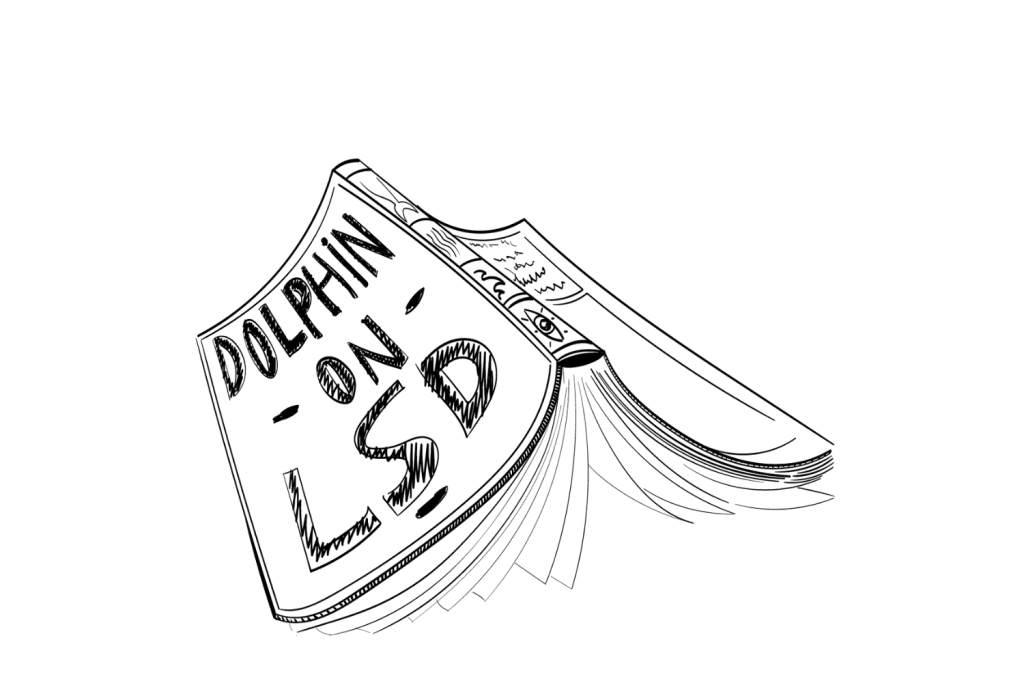
One important element Lilly left out in his attempts was trying to learn “delphenise” — the name he gave to the noises they make. Several others have worked hard to evaluate the noises of dolphins to try and create a lexicon of their language (mostly researching them in their natural environment).
There have been several attempts to decipher and translate dolphin noises into English and some claim to have found a small amount of success.
If dolphins do have a language they speak to each other, it’s arrogance to assume we can force them to learn ours without first understanding theirs. Lilly’s efforts (good and bad) have significantly contributed to interest in animal communication patterns.
2. Lessons for Studying Animal Communication
Another consideration would be our definition of “language.” Language is much more than a tool for meeting our own ends; we use it to have conversations without any personal or evolutionary advantage outside of connecting.
Taking our ideas of language and transferring them to the noises of a wild animal is reductionistic. As one critic put it:
Dr. Lilly takes the view that “those who speak are those who are capable of learning language.” If “one two three” said with very poor intelligibility by a dolphin is indicative of the giant-brained animal’s ability to speak … what is to be said of a parrot’s clear-cut, if bird-brained, “Polly wants a cracker?” Furthermore, if the parrot is then given a cracker, have we established communication with an alien species? [6]
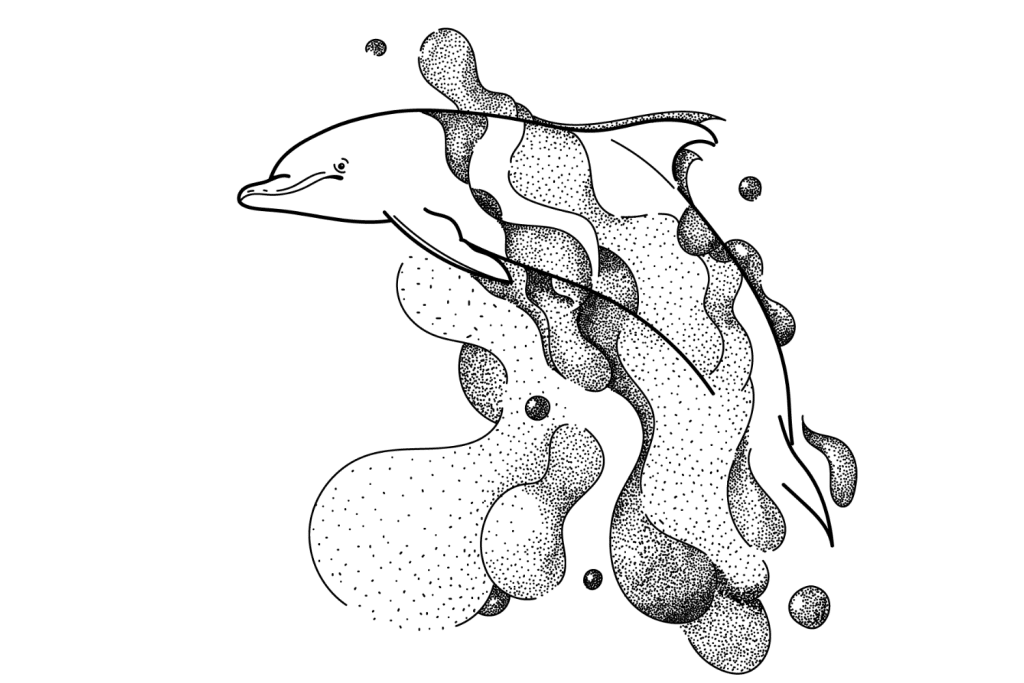
Are dolphins (like us) talking about their days, emotions, and beliefs, or is it as simple as “help,” “hi,” or “I’d like to have sex now?” Finally, would it qualify as “language” if they are only asking for simple things through noises and clicks with each other?
Complexities around animal communication keep it outside our grasp of understanding. Every animal we’re studying has its own evolutionary story, biological restrictions, and brain chemistry.
Anthromorphisizing dolphins takes away the beautiful intricacies of what they’re trying to accomplish with their diverse noises and reduces it to being the same goal as ours.
3. Broader Implications for Psychedelic Research
Lilly bet entirely on his hypothesis being true and left little room for evidence to the contrary. He kept pushing for the acceptance of a belief he had yet to prove true — something we still struggle with today in psychedelia and science in general.
As the hype continues to build around psychedelics, researchers and the media often present inconclusive studies as facts. With only preliminary results from clinical studies, outlets often omit the possibility of negative findings and amplify introductory research.
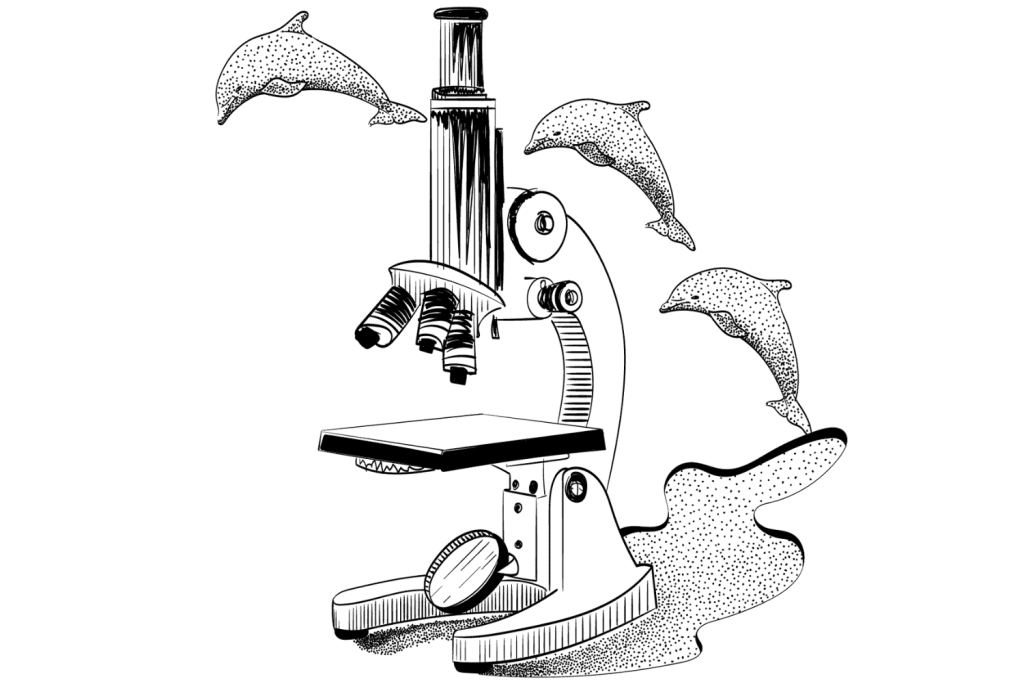
John Lilly had prolific ideas, and he pursued them to a sinister end, often making his theories and hypotheses a laughingstock in the community. In all actuality, there may be potential for communicating with dolphins in the future. However, headstrong pursuit in a singular direction after facing several failures goes beyond practicing bad science — it’s dangerous and foolish.
Do Dolphins Enjoy Drugs?
Dolphins can’t give consent to try drugs, and we shouldn’t give them any against their will. However, some research suggests they seek out a high on their own. A documentary exploring the lives of dolphins observed several of them pass a pufferfish back and forth, potentially seeking the potent neurotoxin it emits when scared.
The toxin in question – tetrodotoxin — has caused at least one person to die just 17 minutes after ingestion and is 1200x more toxic to humans than cyanide is [7]. In the video above, the dolphins seem to be staring off into space, experiencing an intoxicating effect from low levels of the toxin.
This is still only theoretical, and there haven’t yet been any studies on tetrodotoxin and dolphins, so we don’t know this for sure yet. Still, other animals seek out drugs, so an evolutionary advantage may allow them to enjoy a toxin that would normally kill us.
Final Thoughts: Exploring Consciousness Without Consent
Several questions about consciousness, language, extraterrestrials, and more come up throughout the research of LSD on dolphins. A major problem lies in the dolphin’s inability to give any form of consent — either for LSD or sexual exchanges.
Lilly may have joked in the past about researching dolphins before they can demand the same rights as humans, but why, if Lilly and his team truly believed dolphins had similar levels of understanding to humans, is it still okay to conduct cruel experiments on them?
Lilly would later release his last three dolphins, publicly stating his regret for Peter’s death as his reason for doing so. Lilly was an extremely prominent researcher, and several of our favorite psychonauts loved him — Timothy Leary, Terence McKenna, Aldous Huxley, and others were all fans and were deeply invested in his research.
As his life went on, Lilly wrote several more books before his death — each more obscure and mystical than the last. He said his journey — the one that got him to believe in a message that caused him to shirk the responsibilities of marriage, finances, and the scientific method — came from an all-powerful source.
Whether his source was correct or just his mind saying what he wanted to hear, the result was the same.
He left his wife, put all his money down on the house where he would study dolphins, and eventually left science altogether. Nothing is wrong with choosing the mystic’s path, but several dolphins would have likely had a better life if Lilly had gone a different route.
His research is a stark reminder of how we can convince ourselves of a “fact” and dedicate our lives to proving it is true, ignoring any contrarian evidence and abusing all we hold dear. Everyone has the right to live their life this way, but it’s certainly not a good effort for science.
References
- Lilly, J. C. (2007). The deep self: Consciousness exploration in the isolation tank. Gateways Books and Tapes.
- Lilly, J. C. (1958). Some considerations regarding basic mechanisms of positive and negative types of motivations. American Journal of Psychiatry, 115(6), 498-504.
- Lilly, J. C. (1972). Programming and metaprogramming in the human biocomputer. Julian P.
- Lilly, J. C., & Lilly, A. (1976). The dyadic cyclone: The autobiography of a couple. Simon & Schuster.
- Deaner, R. O., Isler, K., Burkart, J., & Van Schaik, C. (2007). Overall brain size, and not encephalization quotient, best predicts cognitive ability across non-human primates. Brain, behavior and evolution, 70(2), 115-124.
- Kaiser, D., & McCray, W. P. (Eds.). (2016). Groovy Science: Knowledge, innovation, and American counterculture. University of Chicago Press.
- Lago, J., Rodríguez, L. P., Blanco, L., Vieites, J. M., & Cabado, A. G. (2015). Tetrodotoxin, an extremely potent marine neurotoxin: Distribution, toxicity, origin, and therapeutical uses. Marine drugs, 13(10), 6384-6406.



